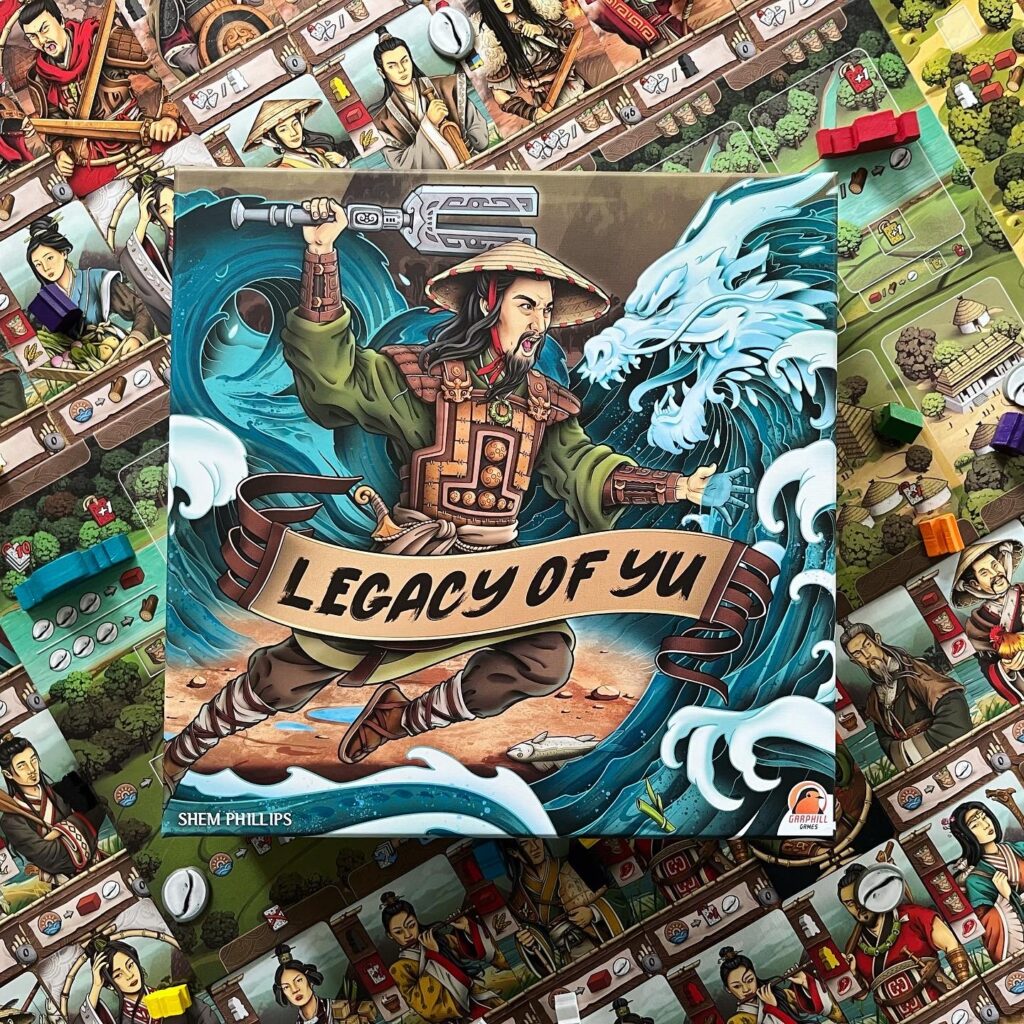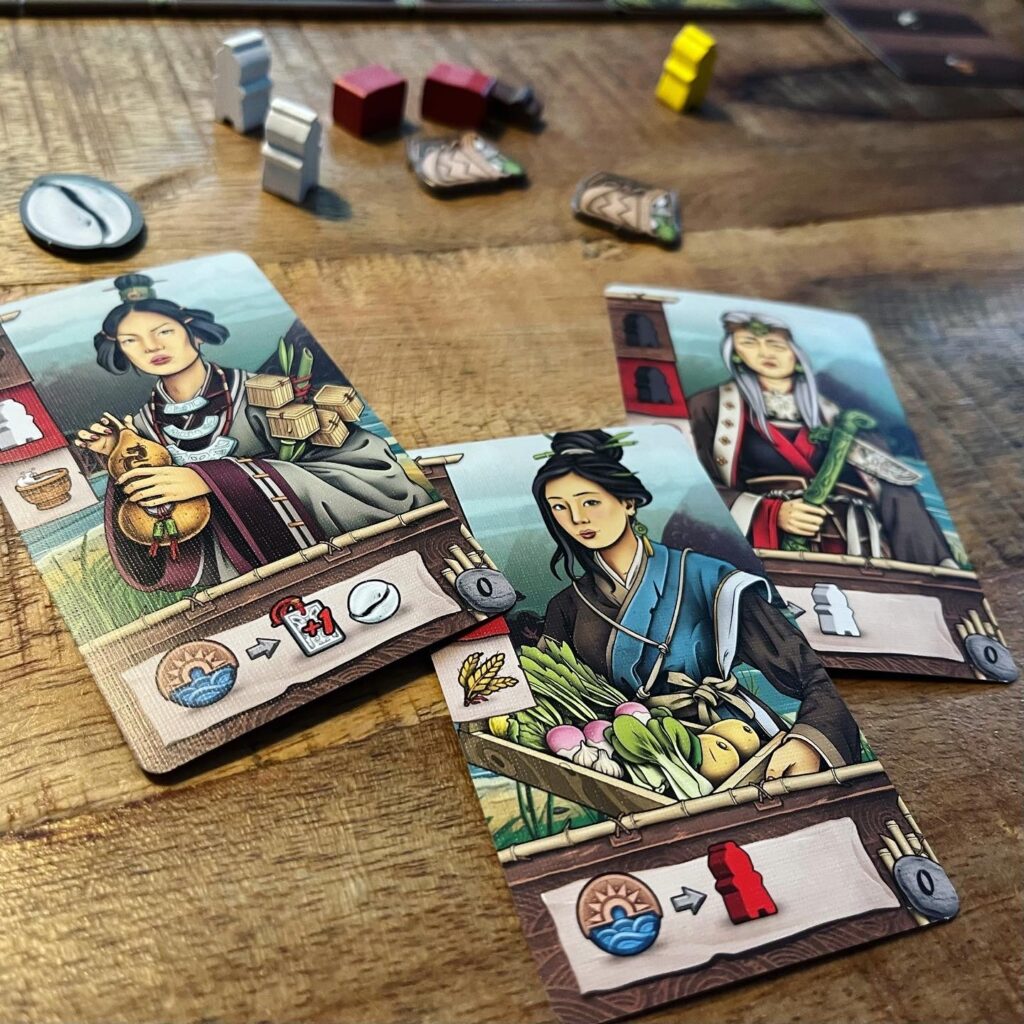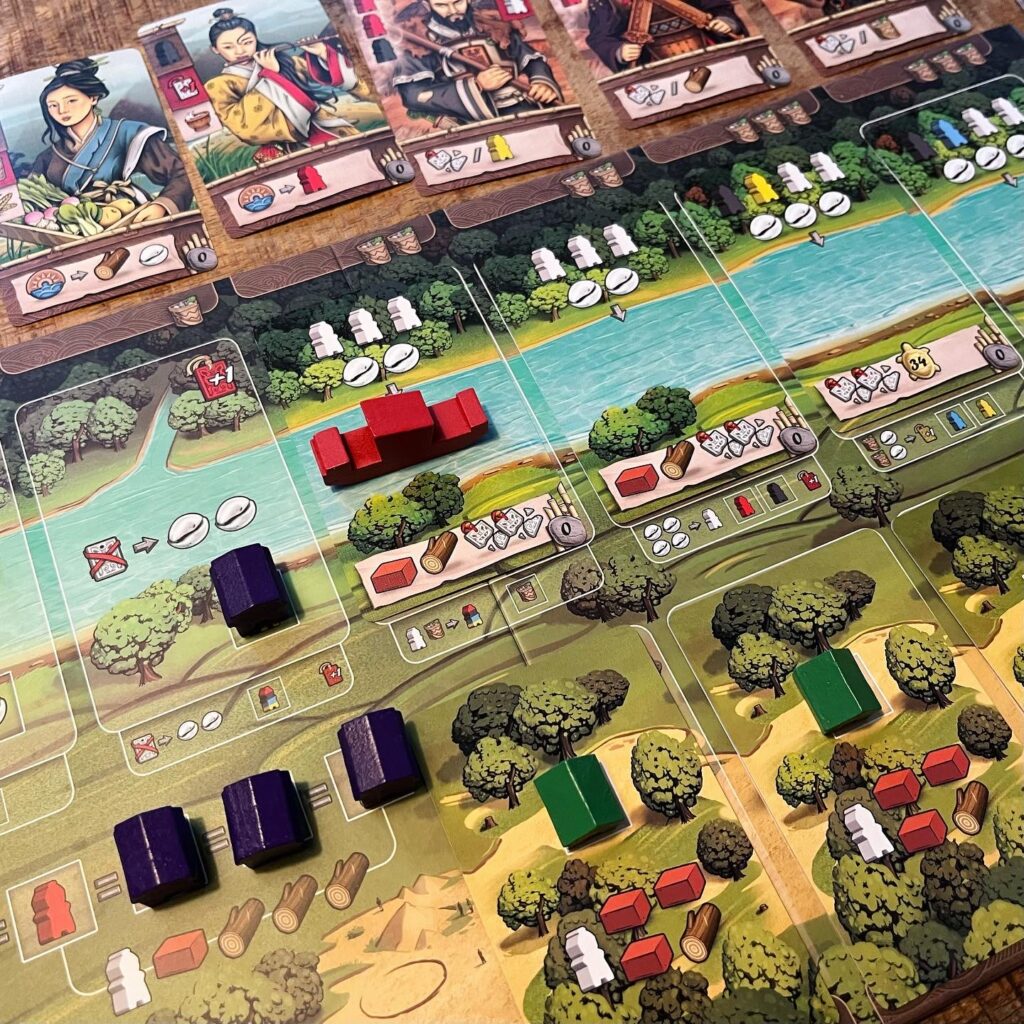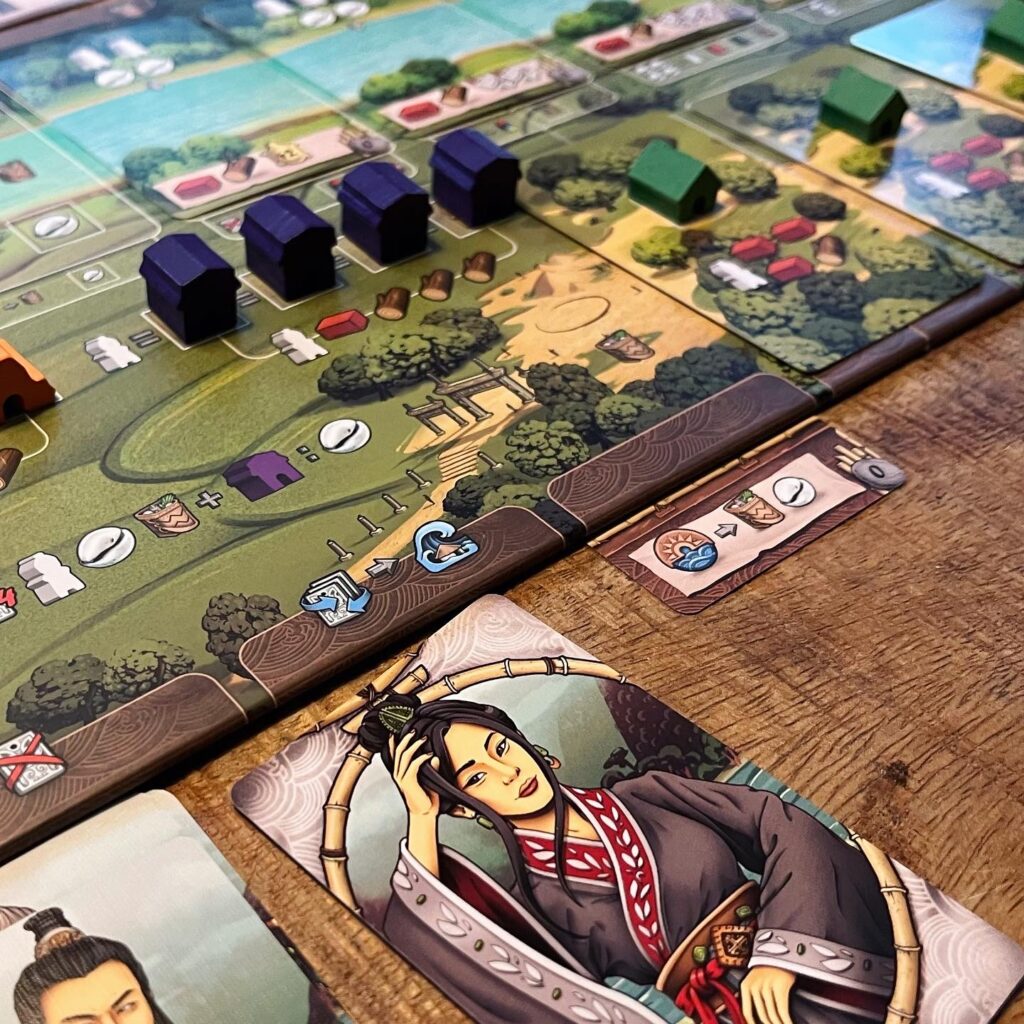After his father Gun fails, it is up to Yu to protect China from the flood threatening the country’s fields. Under so much pressure it’s not easy to keep your head above the water. Will you manage to keep the Legacy of Yu flooding or will his legend slowly ebb away?
Chinese legends
Inspired by Ivo van der Grift, illustrator, artist, conversationist and owner of my the graphic novel store Studio Hoekhuis, I read Monkey King: Journey to the West, translated by Julia Lovell, earlier this Year. Although Ivo himself mainly reads and sells graphic novels, he had purchased this book and I had been interested in the story and reading it before this. As a result, I bought the book myself when I came across it in a local bookstore. The book is a translation of the classic Chinese story written by Wu Cheng’en and is a retelling of the legendary pilgrimage of Xuangzang.
Journey to the West is a grand adventure that draws inspiration from Taoist and Buddhist myths, legends and gods as well as Chinese folk tales. This grand adventure follows the Buddhist monk Tang Sanzang (aka Tripitaka) who, by order of the Chinese emperor Taizong (Tang Dynasty) after being directed by the spiritual Guanyin, embarks on a pilgrimage to the West to retrieve the sacred Buddhist sutras. During the quest, Tripitaka is assisted by a dragon prince who takes the form of a noble steed and Trip is also accompanied by a strange company of disciples: the “demons” Zhu Baije (Pigsy), Sha Wuijing (Sandy) and Sun Wukong (Monkey). During their journey, the company is tested several times.
Sun Wukong, the titular Monkey King, is in actuality the main character of the story. Monkey has a staff that can become as long and small as he wants (convenient) and he can turn each of his hairs into an identical clone (very convenient). Also, Monkey can take almost any form he wants (even more convenient), but has trouble disguising his tail (less convenient). This untrustworthy yet emotionally loyal and cunning tease, monarch, deity and warrior makes for an extraordinary amount of mischief, awkward situations (which he always manages to straighten out) and plenty of headaches in heaven. Monkey is a great character and Journey the West has quickly become one of my favorite books. Although I only read the story myself for the first time this year, I was very familiar with elements of the story through cultural osmosis and you as a reader of this blog may be as well. Journey to the West was the inspiration for many stories and media including Dragon Ball (Z).

So what do Sun Wukong and Journey to the West (a story written during the Ming Dynasty that takes place during the Tang Dynasty) have to do with the board game Legacy of Yu where the player in a campaign tries to stop tidal waves and barbarians during the Xia Dynasty? Basically nothing really, other than that the legend of Xuangzang is a very well-known story from China as is the legend of Yu the Great. Chinese culture has been around for a long time and if you look way back through history, there is a great wealth of stories and legends. Monkey King sparked my further interest in these legends and so did this legend of Yu the Great which is the inspiration for this board game.
The legend of Yu the Great
During the reign of the Emperor Yao (Xia Dynasty), parts of the Chinese empire were often threatened by disastrous floods. This made it difficult to farm and use the land, preventing further economic growth for too long. Something had to be done against these floods. Today we often associate the Netherlands with control over the threat of water. We mention the Netherlands in the same breath with floodplains, polders, bridges, dikes, dams, windmills and combined in the reclamation of entire tracts of land that together formed a whole new province. About 2000 BCE, and thus well before the association of water works with the Dutch, Emperor Yao decided to commission Gun to come up with a solution against tidal waves.
After nine long years, Gun had failed to stop the flood. His dikes and dams failed and the water managed to win time after time. Gun had failed and his son Yu inherited the blame. Yu had to and would stop the floods. Yu worked hard and earned the respect of the locals and his workers. Yu also had setbacks, but Yu managed to stop the floods by building canals that did not try to stop the water, but rather allowed it to run their free course in a controlled way. Yao’s heir to the throne named Shun was so impressed with Yu’s work that he appointed him king, and even as king, Yu was a legend. Like the company in Journey to the West, Yu is characterized by the fact that he was able to endure all sorts of different trials and hardships.
In The Legacy of Yu, the player steps into the shoes of Yu the Great. The player is tasked with stopping the flood. To do that, the player is going to dig canals under time pressure while animal is meanwhile threatened, not only the flood, but also by attacks from barbarians. Players of Legacy of Yu follow a story inspired by Yu that, like his story, is full of setbacks and trials that players will learn from, possibly giving them an advantage during other games. Like Yu, the player will have to roll up his hands and work hard to complete his mission. Indeed, the game is challenging, complex and thematic. Players will need to recruit villagers as workers and stock up on provisions and other resources.
Goal and setup
Legacy of Yu is a single-player board game. Of course, multiple players can play this game cooperatively by making decisions together, but I still call it a solo game. In this solo game, one player will play a campaign consisting of several gameplay sessions, during each play session this player will discover new game elements and go through the story of Yu the Great and all his misfortunes and successes.
The campaign consists of a storybook and a deck of numbered cards. Although the now common gaming term “Legacy” is in the title and the player will play a campaign, no permanent and irreversible changes are made to the game. Players will add cards to their game(s) during the campaign and also put cards back in the box. In this way, game play is varied and expanded, but when the campaign is over, players can “reset” Legacy of Yu and start over. The pile of numbered cards is hefty and there are a lot of different combinations and variations possible, so different campaigns can end up rather differently. It is not that a player is “done” after a single campaign. In addition, the story is a nice touch, but the reason you return to Legacy of Yu is the challenging puzzle and entertaining gameplay.



During the campaign, you will unlock new gameplay elements, but the game design and progression of each game of Legacy of Yu is basically the same. By collecting resources and deploying workers, the player tries to dig 6 channels before the flood reaches the player, 7 barbarians have taken over the game board or the player runs out of villagers.
To get the game ready and set up, players place the game board on the table and place the box with handy inserts with sorting trays full of different components within reach. They shuffle the townsfolk cards and draw 10 random cards to form a separate pile with them at the bottom of the game board. These are the available townsfolk. Six townsfolk cards are placed above the board and, in addition, 1 barbarian is drawn from the shuffled barbarian card deck. Six canal cards are placed on the river and four hut cards are placed on the field. The different colored houses are placed in the appropriate places. The flood wave piece is placed on the far left of the game board and the red barge is placed on the left channel card.
Gameplay
In principle (depending on the new gamePlay elements players have unlocked during the campaign), each game proceeds as follows: 1. Harvest, 2. Actions, 3. Return of the barge (if relevant), 4. Attack of the barbarians and 5. Refresh of cards.
Harvest
During harvest, players receive cards and new resources. At the beginning of the game they receive only what is marked with the harvest symbol on the game board, but by playing cards, building farms, outposts and huts players may receive other bonuses.
Here it is right away good to mention that Legacy of Yu, like other games from publisher Garphill Games such as Architects of the West Kingdom, contains a particularly large amount of clever symbolism on the various game components such as the game board that help and remind players of various (inter)actions during the game.
Legacy of Yu contains different workers and resources. The workers all have their own color and role, but as the game progresses, these role divisions will fade. These workers gain experience and can perform a wider range of tasks as a result. The various resources include wood and clay, which were obviously important for construction, as well as provisions and cowrie shells. The latter may stand out, but it has a clear thematic link. In fact, these cowrie shells would have been used in ancient China as a means of trade and currency: the most important commodity on earth….
Actions
After players have harvested, they are ready to perform actions with their acquired resources and workers. Players have great freedom of choice and may perform actions in an order of their liking. Players can recruit new villagers by depositing provisions, build on the canal by depositing the indicated workers and cowrie shells, trade by exchanging resources and cowrie shells, build farms, outposts or huts by depositing the appropriate resources and workers, place workers on fields for bonuses, defeat barbarians or play cards.
Cards can be used in a variety of ways. Cards can be exhausted for a bonus (worker or resource), discarded for an additional bonus (but the player has now lost this card) or this card can be put under the board (if there is room) for an ongoing bonus. Each card also contains food and different game mechanics are linked to this later in the campaign.
All actions are largely intertwined and by planning the actions well, players can cause chain reactions. By exhausting or discarding the right card, players potentially unlock resources and workers with which they can build a hut. By placing the hut, they may gain a bonus that they can use to unlock a worker, who in turn, along with other workers, can attack a barbarian, freeing cowrie shells to build on the canal. As players build on the canal, they unlock new locations to build. By building huts, on the other hand, they unlock new locations where they can place cards for ongoing bonuses, with farms, players earn more during the harvest, and with outposts, the workers don’t necessarily have to stick to their given colors.



Certain actions and cards sometimes refer to the storybook. Players scroll to the indicated number, read the corresponding part of the story and follow the instructions. In this way, the game changes while you are still playing.
Barge, attack and refresh
After a player has performed all the desired and possible actions, it is time to complete the round. Once a player has built a canal and removed the corresponding canal card from the board, the barge is placed on the next canal card.
It is now time for the barbarians to attack. All barbarians above the game board attack. Players can ward off attacks by discarding the resources or workers indicated, but the barbarian remains. If a player cannot avert an attack, they must discard cards. Ouch! New barbarians and villagers are placed after this.
Game end and verdict
During the game, if a player must shuffle the available villager cards that have been exhausted, the tidal wave is moved forward on the game board. If the tidal wave reaches a canal card (or a place where no canal has yet been dug) then players have lost. Each time barbarians attack and players cannot avert the attack, a player must discard cards and the probability increases that cards must be shuffled. If a player runs out of cards, the game is also lost. Also, if there are 7 barbarians above the board, the game is over. Players must therefore also focus well to keep all the different balls in the air, which is quite challenging. After all, they need to collect enough resources to build, but at the same time they also need to get their engine going to be able to deploy more bonuses later in the game, and all this while the barbarians are threatening and players are losing their precious workers to them…
Each time you win a game you draw a card from the victory pile that saddles you with new challenges down the road. Yu the Great did not earn his title, then, because the tidal wave was a pleasant stream… Instead, each time you lose, you draw a card from the loss pile and get a little more help. Indeed, Yu learned from his father Gun’s mistakes, as well as his own failures, to make it to success. Once a player has won 7 times or lost 7 times, the campaign ends. During the campaign, the player, like Yu, will face multiple setbacks and trials.
Legacy of Yu is a delightfully thematic board game. It is comprehensive and combines several game mechanics and features in a very elegant bundle. The confluence of different actions and choices makes for an incredibly intriguing, challenging and tight gameplay. The campaign and the different game elements you can discover and unlock makes the game varied and makes you want to continue playing the campaign and after finishing a campaign you want to learn about everything you missed. The challenge of the “puzzle” makes you want to win. As a result I keep Legacy of Yu highly recommended and currently it might even be my favorite solo game.



